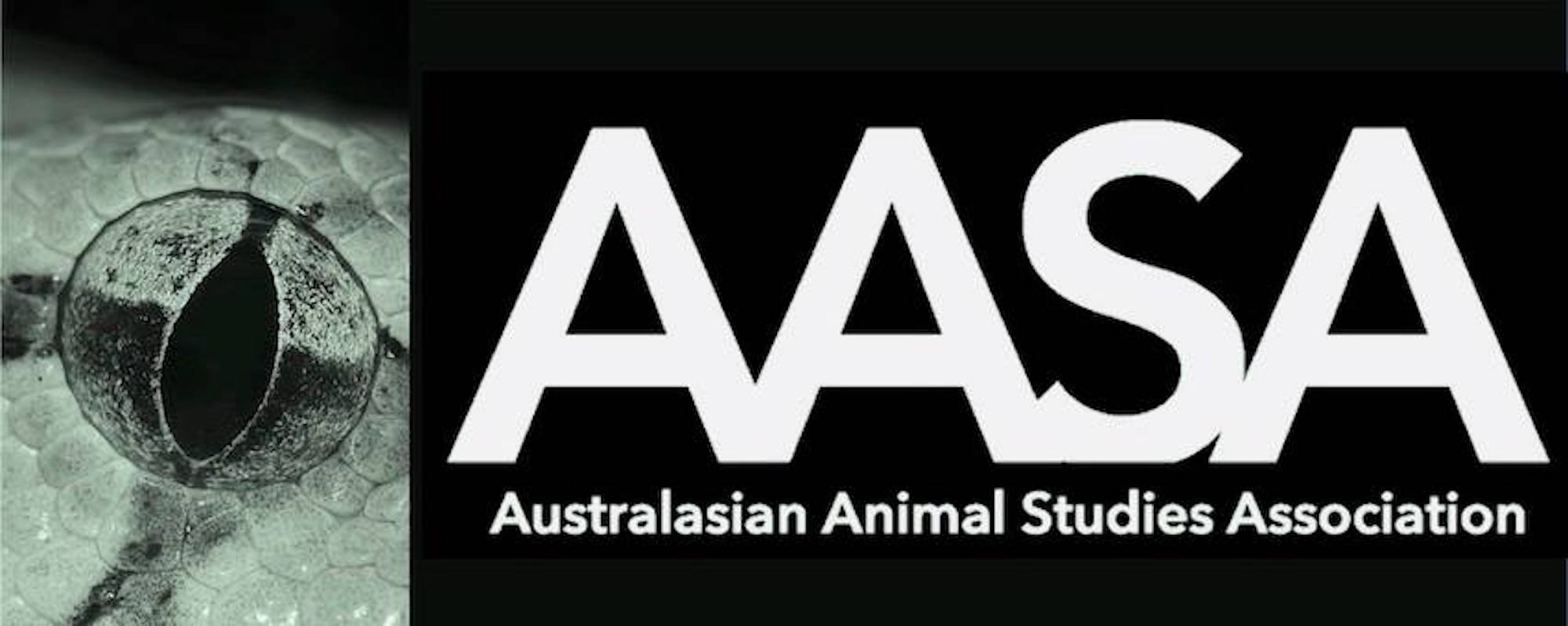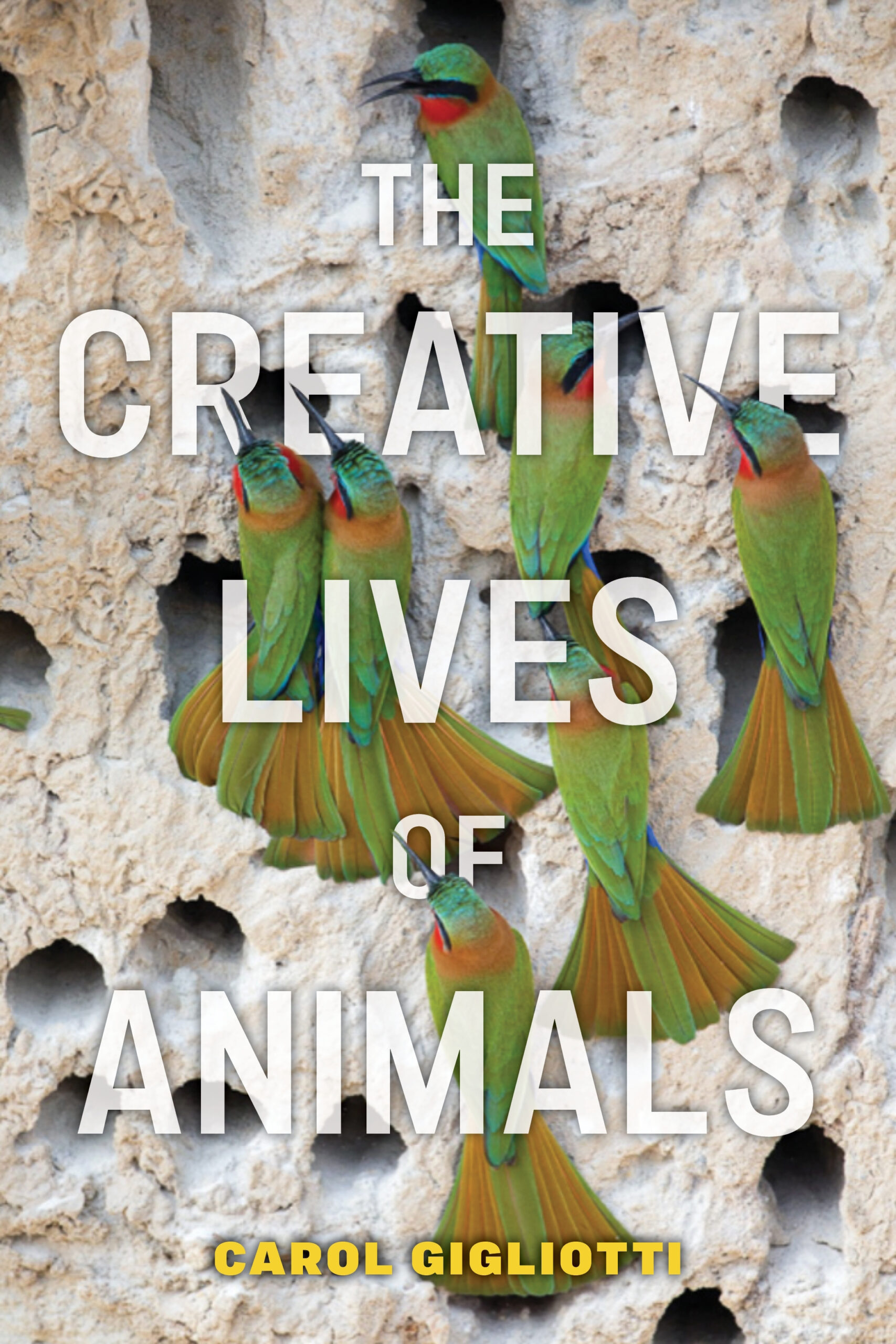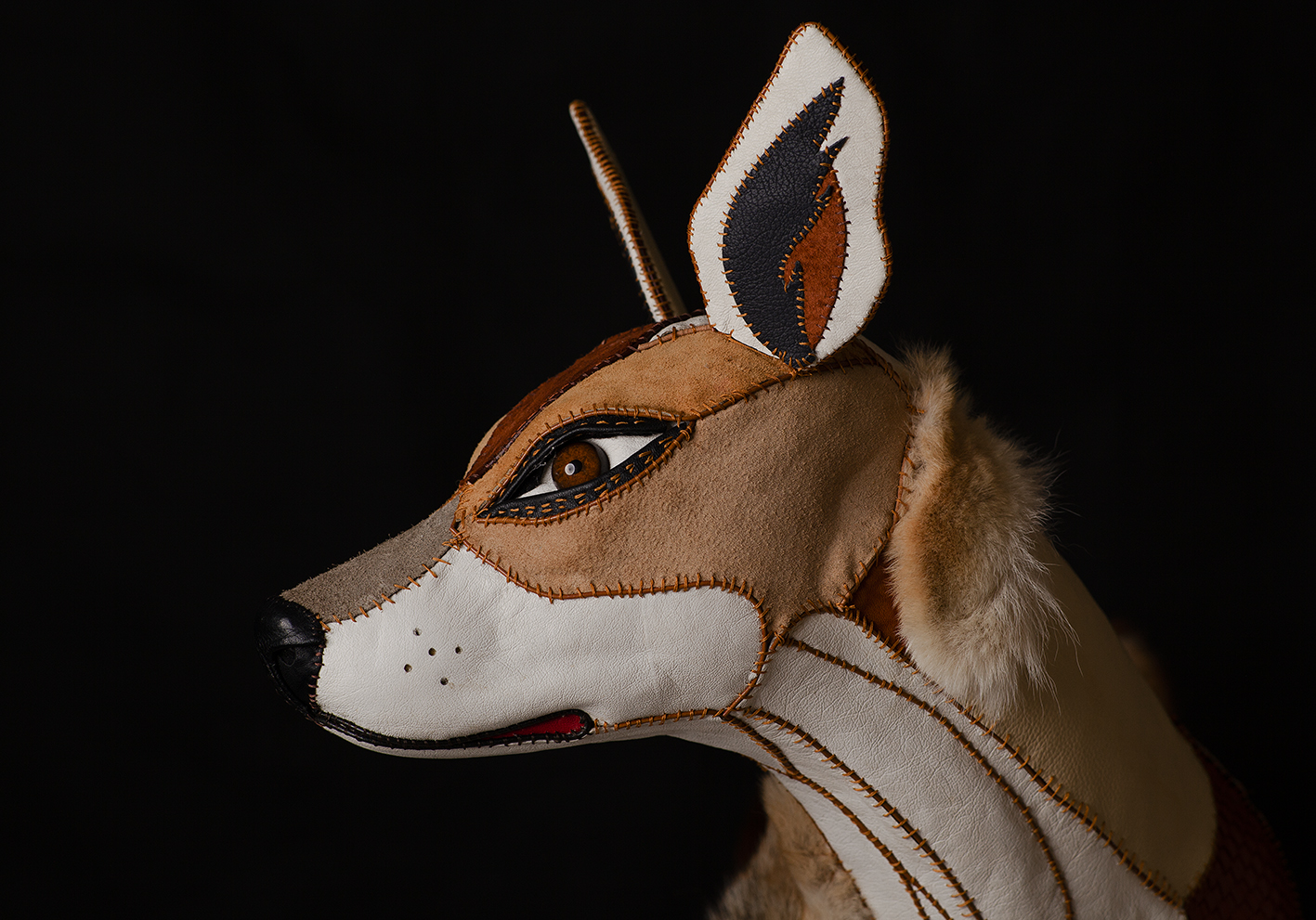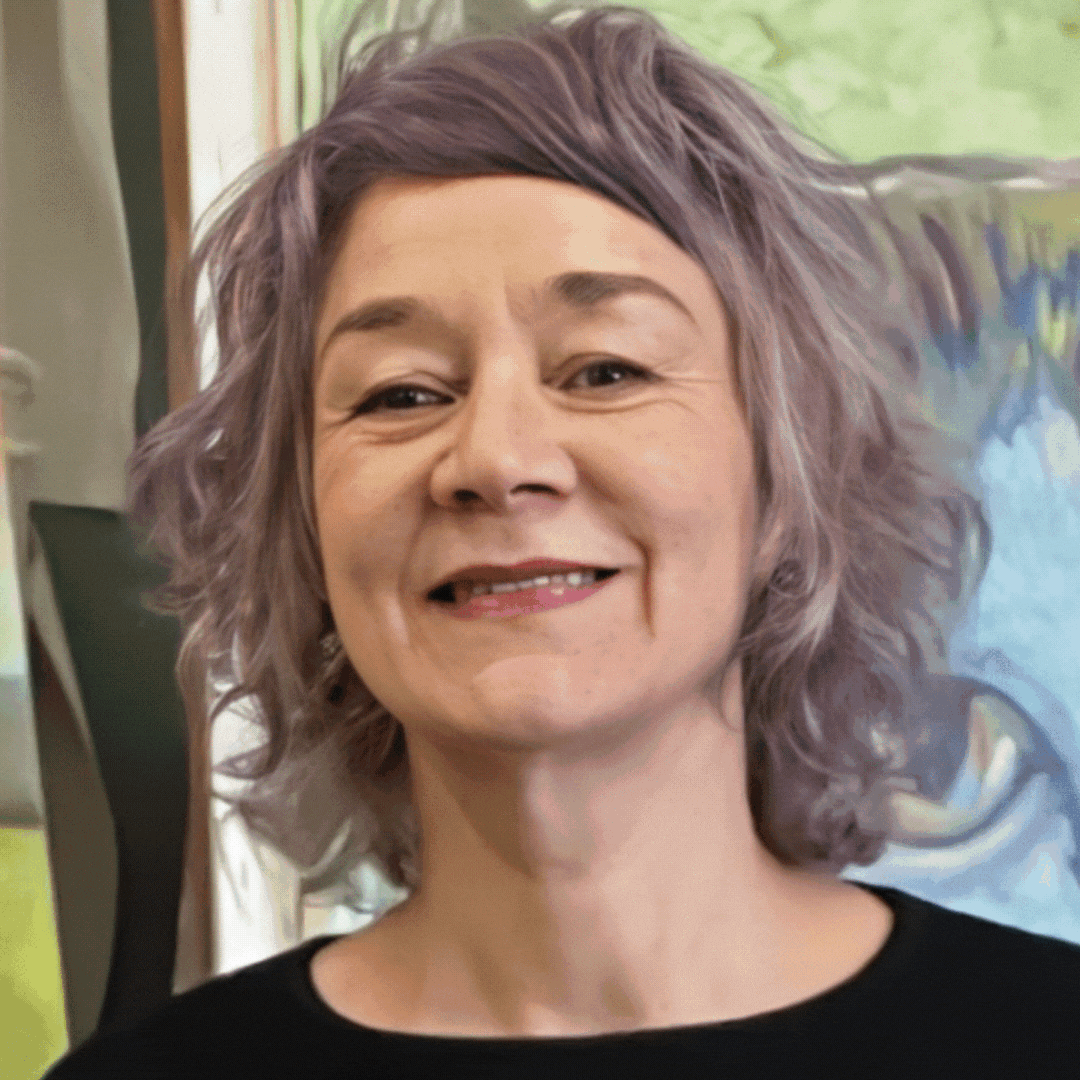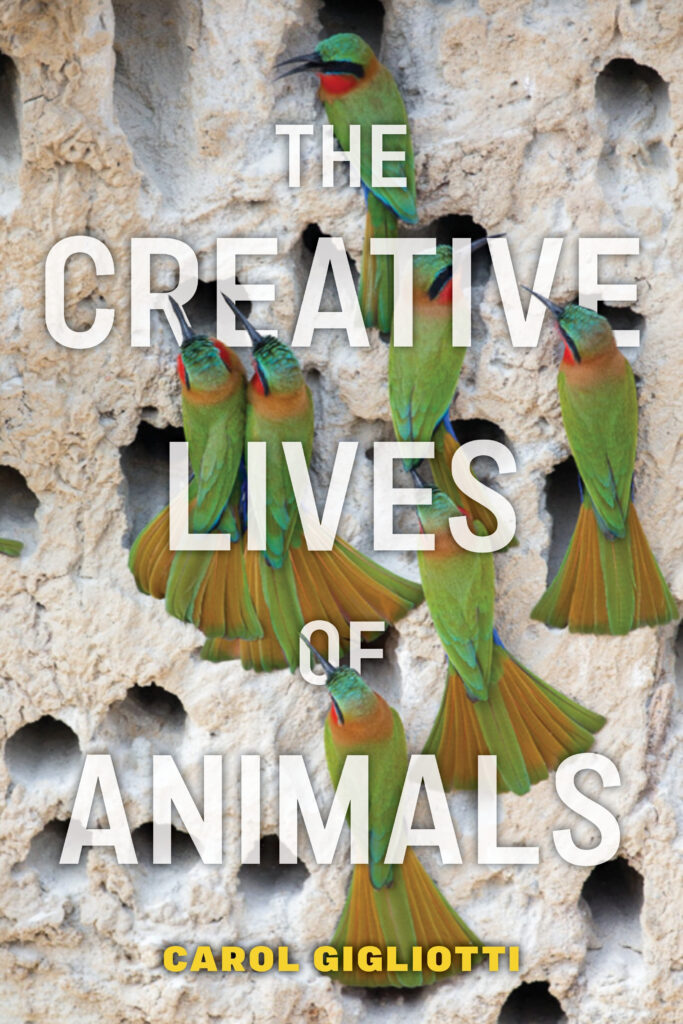
A favourite activity of my (rescued) sheep is eating the leaves and flowers from surrounding trees, the higher the branches the better. In order to reach the latter the sheep have to stand on their hind legs. Henry has never mastered this technique, a disadvantage that he quickly compensated for with a creative solution: he worked out that if he managed to grab, with his mouth, the lowest part of a branch, he could, with patience and care, slip it under his chin, and with the branch secured between the chin and the neck, he could move up the branch right to the tips eating the goodies on the way. Other sheep learnt this method from Henry, and, as their bodies age, they’ve begun to utilise it with increased frequency. A (creative) solution to an extant problem turning (via horizontal or vertical transmission) into a tradition is a recipe for culture. Nonhuman animals weren’t supposed to have any of this: creativity, traditions, cultures, but as it turns out, humans were wrong again. Carol Gigliotti’s book The Creative Lives of Animals, a 2023 Nautilus Book Award winner, is a testimony to the creative (and to some extent cultural) richness of the animal realm.
AASA: Creativity in animals’ lives (human inclusive), your book suggests, is not just the icing on the cake, it is at the very foundation of animal survival and existence. Did you know this when you started to research this topic, and how come it’s taken humans so long to realise it?
CG: During my work in the arts, I not only had come to an understanding of human creativity that involves more than just an aesthetic human quality, but also one that includes the crucial step of judgement or choice. Having taught diverse students over so many years, I also came to an understanding of creativity as a foundational quality of living in this world and so available to everyone if they choose to implement it. I had a strong sense that animals also are creative in their own unique ways. I say in the book that creativity can be compared to one of the four fundamental states of matter: liquid. Like a liquid, it may have a definite volume but no fixed shape. Creativity allows animals, human and more-than-human, to solve problems in ways that are new and meaningful to them. Humans have had no trouble believing that their creativity produces new and meaningful solutions of all kinds, tangible and intangible. Our slowness in admitting the creativity of other animals is because of our resolute refusal to admit that other beings are able and willing to make meaning for themselves. The creativity of animals is a major contributor to animal culture and while only the last chapter is focused on culture, the previous chapters in the book were important to form that path for the general reader.
AASA: You emphasise that in considering creativity we should be more interested in the processes rather than products, however, what becomes evident from your book is that actually there is a lot of productivity accompanying creativity in the nonhuman animal world, but with our limited sensory capacities we are likely to miss a lot of it. For example, we can walk right through an iguana territory and be completely oblivious to the creative ultraviolet fencing that one of them has put up to keep the neighbours out. Regardless of whether animals are building homes or changing body colours to trick their peers, most of their creative endeavours are intentional rather than ‘instinctual’, i.e. they choose to do it, and they know exactly what they are doing and why. Can you talk about this?
CG: This iguana example from the book is a perfect example of our ingrained disregard of anything that we think does not affect us. These instances in the book speak to the rich and often completely dissimilar senses that animals use to navigate and understand the world. We have assumed wrongly that if the senses of sight and hearing as we employ them are not used to perceive the world, then those perceptions either do not exist or do not matter in any useful way. Problem solving, planning for and predicting future events, and cooperating with others to accomplish a task were all believed to be the province of humans and, perhaps, the higher primates. It was not until the latter part of the last century that scientists recognised that animals, other than humans and chimpanzees, could think abstractly and then act on those abstractions. Until then, the ability of an animal to hold a piece of knowledge in memory—for instance, knowledge not just to accomplish a task but to create something new, a new way to find food, a more optimally located nest, a way to open a cage door—was considered nothing more than ‘instinct.’ It was not thought of as indicative of intelligent behaviour or, in these examples, creative thinking. With important exceptions, the prevailing belief was that animals could not think, let alone think creatively. Over the last few decades, scientists in an array of fields, such as ethology, behavioural ecology, animal behaviour and learning, cognitive sciences, comparative psychology, and evolutionary biology, have documented in thousands of field studies that animals think. Animals choose how they respond to the world around them, implementing their unique senses, intelligence, experience, goals and, of course, their creativity.
AASA: Why is play important and what’s your advice to those adult humans who don’t play enough?
CG: The ability to play is essential in encouraging openness, flexibility, curiosity, and inventiveness, all characteristics found in creative behaviour. The freedom of behaviour and openness to experience found in play offer a uniquely rich context in which creativity flourishes.
Play as practice for adult behaviour is still a popular explanation for play in young animals, but adult animals also play—one reason for more robust and wide-ranging investigations in play research. As with research in animal intelligence and communication, it has been a long road in defining criteria and methods for observing and verifying examples of play in animals, even though observing play is often a more direct experience than observing intelligence, communication, or emotion in animals.
Insect researchers, however, have been aware of continuing scepticism towards insect play. That is one reason it was important to include other animals besides mammals in the play chapter. Dapporto, Turillazzi, and Palagi begin their article on play behaviour in paper wasps with this bit of coaching: “The idea that insects play has often aroused scepticism. Nevertheless, the authors investigated the occurrence of a play-like behaviour in young individuals of a paper wasp.”
Being playful is a crucial part of being creative. It is also important to have the freedom, safety and time to feel playful, something that is in short supply for many in today’s world. I think the human world would benefit from some non-competitive playtime. If that sounds like an outrageously naïve suggestion, just think of how much money is spent on the Olympics and how instead those funds could be put towards an approach for a more playful and open-ended approach to even the same sports and games, with players from different countries switching teams, getting to know each other as other people and not competitors.
AASA: Over time creative solutions lead to traditions and cultures, essentially ways of being and doing that are most suitable for a particular group of animals inhabiting a particular ecological niche. When the world comes crashing down, as it’s happening to nonhuman animals worldwide due to human interference and outright violence, both individual life and culture are at risk. In her AASA blog, Lori Marino argues that extinction is personal – many individual animals suffer and die before a species is extinct – but extinction is also cultural. What does this mean for conservation efforts?
CG: I had two overarching goals for the book. One was to encourage humans to see other species as creative individuals. While much has been written in animal studies about qualities once considered only applicable to humans, creativity seemed at the time of my starting the book to be a continuing barrier erected by those who still insist that we are the only creative species, no matter knowledge to the contrary. I wanted to construct an understanding of all animals as powerful and essential beings without whom the entire planet would not support life. ‘That is an apt quote from Lori Marino. Extinction is personal for the individuals and their cultures who are being erased. My other goal for the book was to place the creative individuality of a wide range of animals front and centre in conservation work and thinking.
If we are serious about resisting global warming, we need to see how vital biodiversity is to the health of the planet. Restoring and protecting biodiversity is the primary aim of conservation biology. Recognising differences between individuals, between their cultures, between species, and between their unique interactions with the world have crucial impacts on the survival of all species and are a major driver of biodiversity.
Carol Gigliotti is an author, artist, animal activist, and scholar whose work focuses on the reality of animals’ lives as important contributors to the biodiversity of this planet. She is Professor Emerita of Design and Dynamic Media and Critical and Cultural Studies at the Emily Carr University of Design, Vancouver, BC, Canada. She is the author of The Creative Lives of Animals, published by NYU Press (2022). Her website is carolgigliotti.com
Teya Brooks Pribac, PhD, is a scholar and multidisciplinary artist, living in the Australian Blue Mountains with sheep and other animals. She’s currently a research affiliate at the University of Sydney. Her recent publications include the Nautilus award winning monograph Enter the Animal, and the recipe collection Not Just Another Vegan Cookbook.
